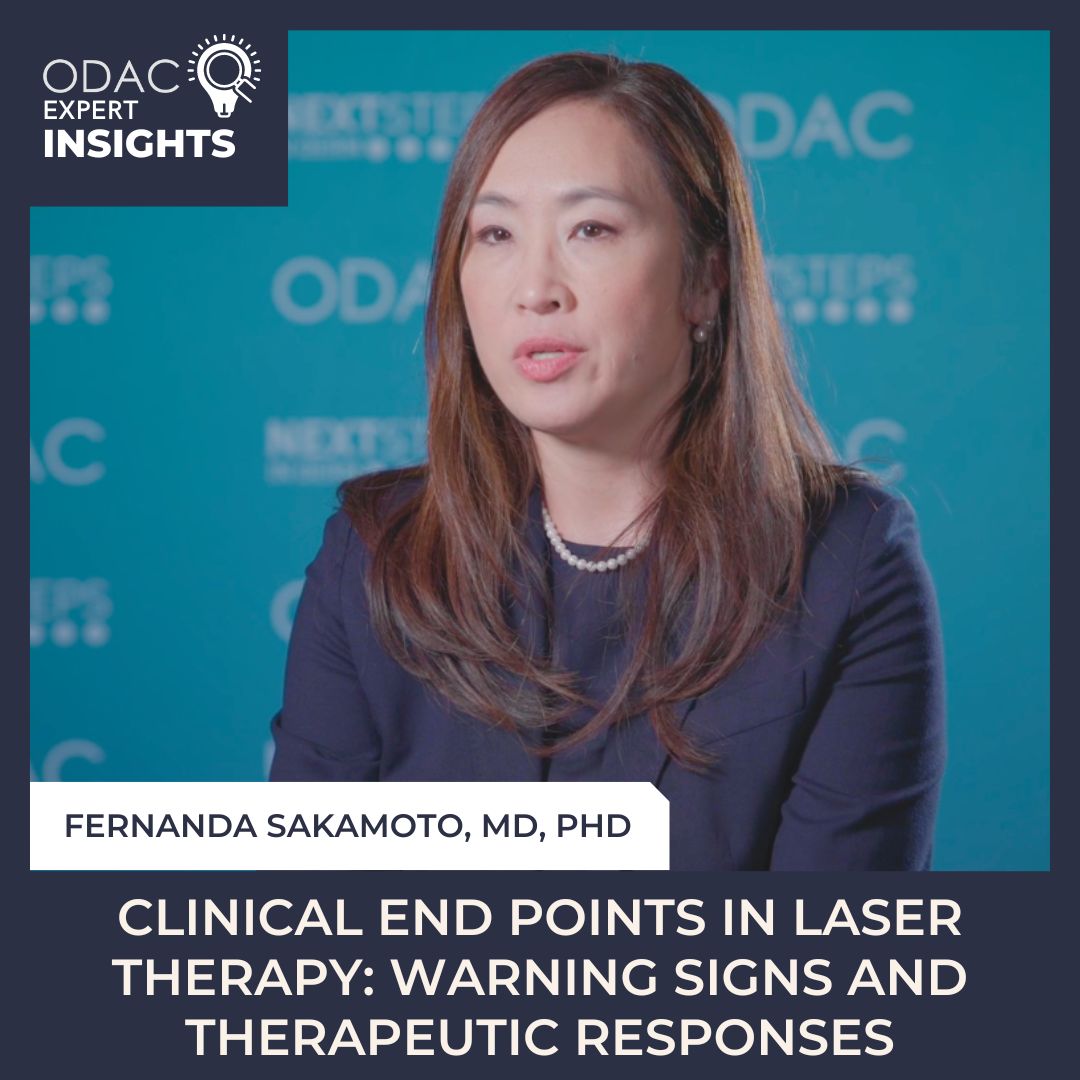If you don’t know clinical end points in laser therapy, you will have a greater likelihood of severe or long-lasting side effects, says Dr. Fernanda Sakamoto, assistant professor of dermatology at Harvard Medical School. Next Steps in Derm, in partnership with ODAC Dermatology, Aesthetic & Surgical Conference, interviewed Dr. Sakamoto, who explained how clinical end points can give dermatology clinicians a peek into how the treatment is going. Watch as Dr. Sakamoto explains the two types of clinical end points. Learn why seeing patients as individuals is crucial. (No cookie cutter approach to lasers!) Plus hear how clinical end points can result in safer, more effective care.
Further Reading
If you want to read more about laser therapy, check out the following articles published in the Journal of Drugs in Dermatology:
ABSTRACT
Gold microparticles are indicated as an accessory to 1064 nm lasers to facilitate photo-thermal heating of sebaceous glands for treating mild-to-moderate inflammatory acne vulgaris (Sebacia Microparticles, Coronado Aesthetics LLC, Southlake, TX). The following study assessed the safety and clinical benefit of gold microparticles/laser therapy when used together with commercially available topical acne products. Healthy patients, 12 to 45 years old with mild-to-moderate inflammatory facial acne were prescribed a topical pre-treatment retinoid for 3 to 4 weeks. The gold microparticle suspension was then applied to the entire face and massaged into the skin. The laser procedure was performed with commercially available 1064 nm Nd:YAG lasers with fluence in the 20 to 35 J/cm2 range, a 30 ms pulse duration, and direct cooling. Among participants completing the study (N=52), the mean percent change in inflammatory lesion counts (ILC) was -55% at month 2, reaching -68% at month 12. At that time, 86% of participants achieved a 40% decrease in ILC and 75% achieved a 60% decrease in ILC. Mean Investigator’s Global Assessment (IGA) Scale scores decreased by 41.6% from 2.4 at day 0 to 1.4 at month 12. The percentage of participants with clear or almost clear skin increased from 7% at day 0 to 59% at month 12. Acne therapy with topically applied gold microparticles followed by 1064 nm laser irradiation is an effective treatment for moderate to moderately severe acne. The treatment was well-tolerated with a high degree of participant satisfaction.
ABSTRACT
Background: Studies show it is safe to have multiple sessions of single laser treatment over an appropriate time period, which allows for the skin to heal between treatments. Waiting to have several sessions may not be realistic for every patient. Physicians may combine laser treatments into a single session to accommodate for patient convenience and to achieve cosmetic improvement faster. Although individual laser therapies are reported to have minimal side effects, few studies explore the safety of multiple laser treatments in a single session.
Methods: This study is a retrospective chart review from a single-physician patient pool. Patients who received 1 laser treatment in a single session were compared to those who received 2 or more laser treatments in a single session. Patients were evaluated for treatment type and safety, measured by the Common Terminology Criteria for Adverse Events (CTCAE). The CTCAE is a validated severity scale (1-5) where 1 represents minimal adverse events and 5 represents death. Adverse event scores were acquired from follow-up visits, messages through the electronic health record, or follow-up phone calls.
Results: Over a 12-month period, 89 patients qualified for the study with 152 sessions recorded: 116 had 1 laser treatment and 36 had 2 or more laser treatments in a single session. All but 1 patient scored a 1 on the CTCAE, the other, a 2.
Conclusion: This study suggests there is no difference in adverse events from a single laser treatment vs 2 or more laser treatments in a single session.
Did you enjoy this video interview? Find more here.

